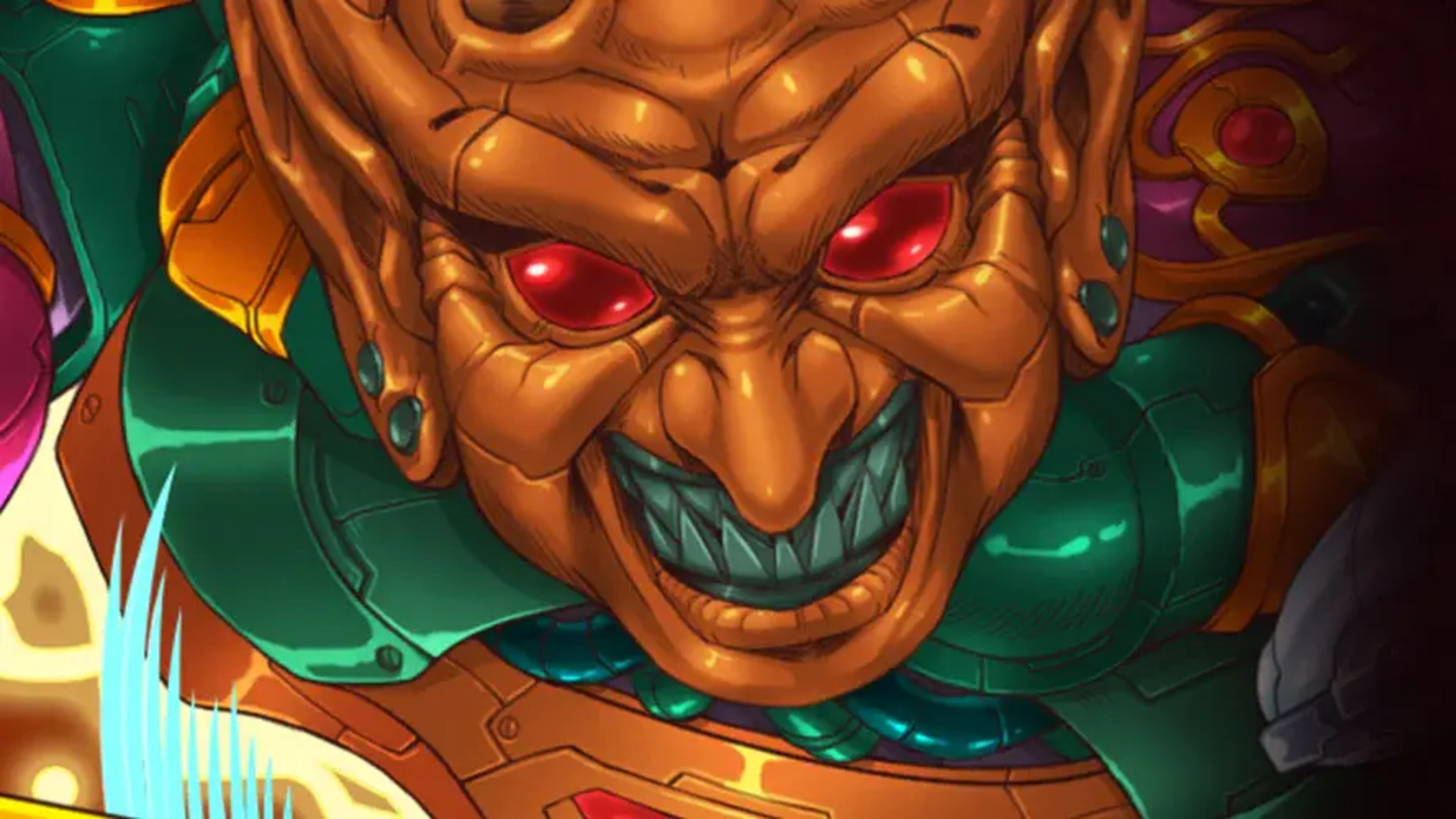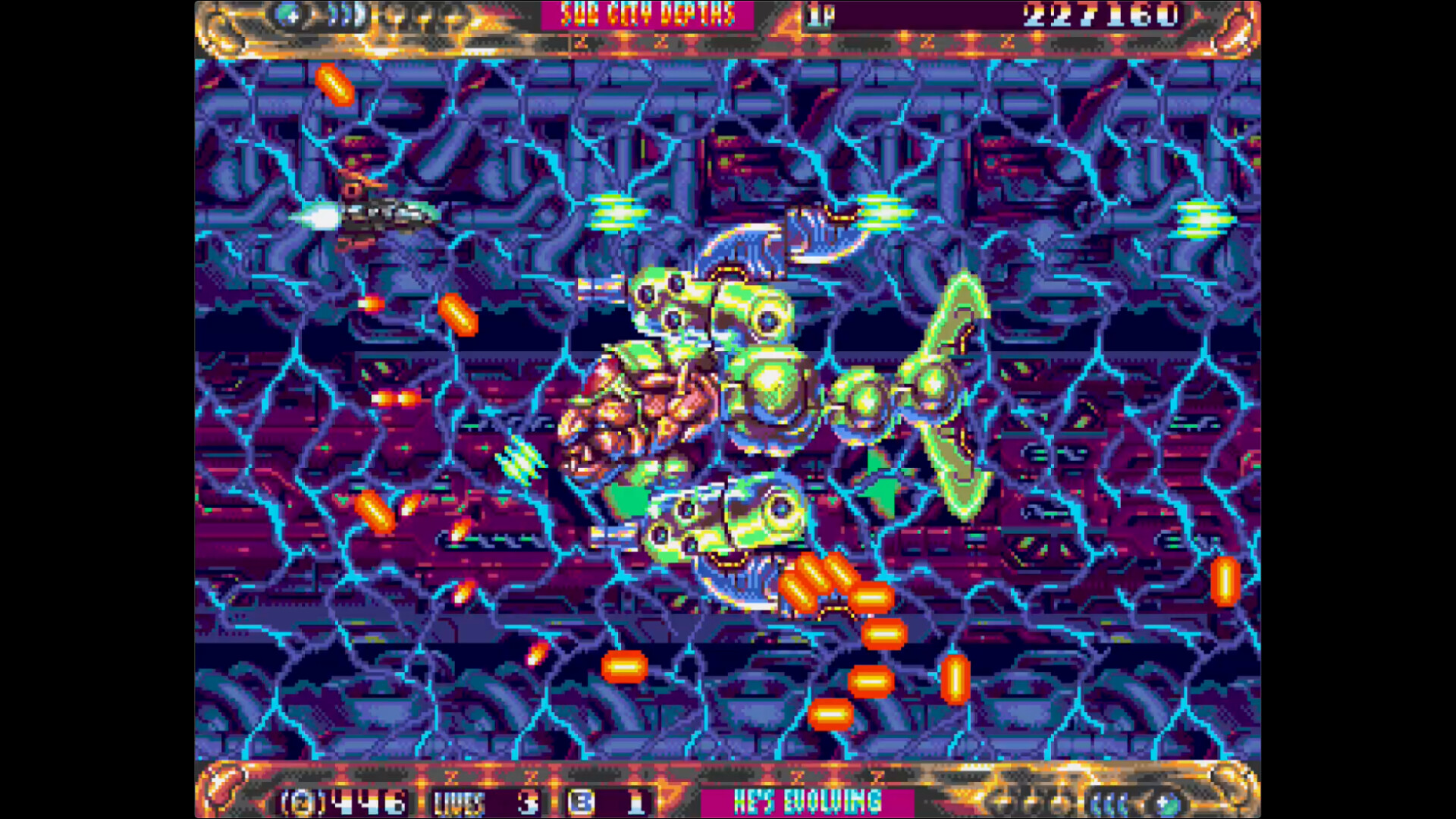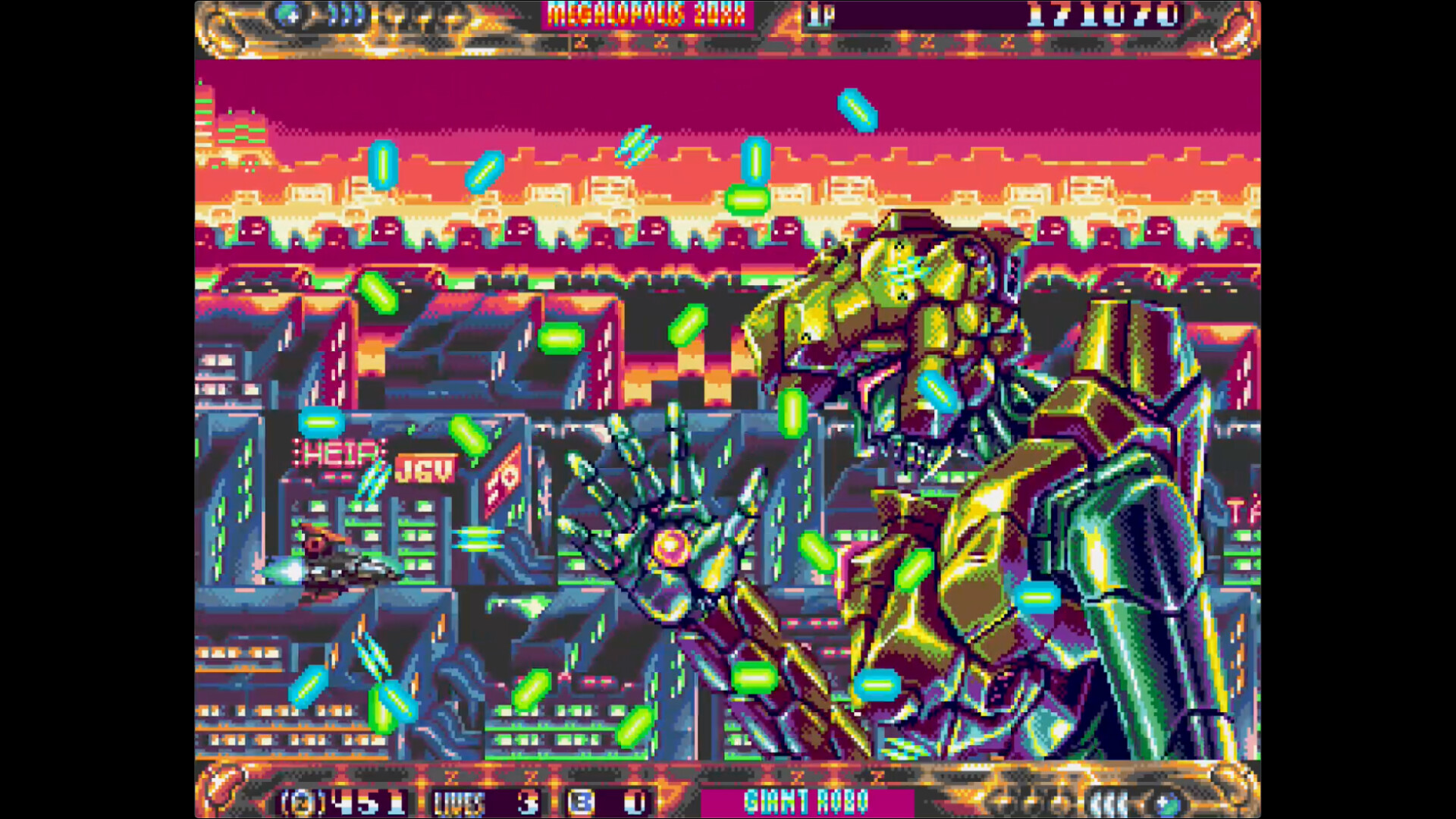
I caught a lot of bullets in my time playing the new Sega Genesis game - yes, the new Sega Genesis game - ZPF. But! The amount of time in-between each bullet gradually increased as I caught up with the shoot 'em up's blistering pace, learned to take advantage of upgrades between and during missions, and achieved a flow state undisturbed by the sheer amount of stuff happening at once.
ZPF, from the undisputed king of the modern retro game, Mega Cat Studios, is precisely what you'd expect from a game that builds on pretty much every classic shoot 'em up of the 16-bit era – from Forgotten Worlds to Shadow of the Beast and everything in-between. It's frenetic, sometimes overwhelmingly so, but there's an order to the chaos as you slowly learn to navigate just enough to survive a little longer than you did your last run.
The scoring system, which grants points based on enemies killed and the varying worth of items you collect, makes stepping away even harder. Watching your three-digit handle climb the scoreboard as you wipe beads of sweat from your brow will never not be satisfying. But before you get that satisfaction here, you'll need to learn to maneuver through a lot of enemy fire of varying shapes and sizes while making time to collect power-ups and line up your shots to ensure you aren't just wasting metal.
In the demo I played, I whirled across the screen as three different characters: a knight that fires off a thick blast of blades straight in front of him, a ship called Gladius that uses a scattershot type weapon, and another ship called Gold that utilized a "slicer beam" to, well, slice and dice enemies in a straight line. All three characters also have their own unique melee abilities and a bomb that neutralizes everything on screen.
Blast processing, baby

Speaking of everything on screen, there's a variety of different biomechanical aliens firing at you from all over the place, and then there's the power ups that whirl past you. What really surprised me on a technical level is just how profoundly detail-rich the environments are. Frankly, from prismatic light beams to giant mushrooms and turtles to Banyan trees, it's what I imagine an Ayahuasca trip would look like, and it can be just a hair overstimulating at times.
In the case of ZPF, Sega really does do what Nintendon't, at least when we're talking about 16-bit consoles. It also does what the Sega Genesis didn't do until just now: it looks and plays like an indie game released in 2024, except it's on a cart that you actually stick into your old Sega Genesis or Mega Drive without any mods or hardware upgrades.
Granted, it's designed to be reminiscent of games from the early 1990s, but simply put, it's more colorful, more detailed, and smoother than its progenitors, even on the late '80s-era CRT screen I was wired into. Conversely, I think the enemies and bullets could use a little more contrast against the environments, as at times it can be hard to distinguish between the two, but otherwise it's a visual feast.
The multi-layered backgrounds and parallax scrolling are impressive, and it makes awesome use of the hardware's color palette. The sheer amount of stuff happening on-screen without any performance dips is a sign the developers are working within the very limits of the 35-year-old console's power.
This is thanks to the combined experience of ZPF's development team, led by Perry "Gryzor" Sessions, creator of the acclaimed 2020 indie shoot 'em up Super XYX. Mikael Tillander, who made the 16-bit hack-and-slash darling Tanzer, is handling the coding and hardware side of development, while composer Jamie Vance, whose credits range from Call of Duty 2 to WWE SmackDown! Vs Raw 2006, is to thank for the nostalgic chiptune score. It all comes together in a package that would've blown my mind in the early '90s and, even today, fills me with excitement for the full game's eventual release.
One more try

Speaking of which, you can count on that full release to arrive with a ton of additional features that were only stretch goals when the Kickstarter first launched. I stumbled upon Mega Cat's crowdfunding campaign a few weeks ago, close to when it started, and it had managed to fully reach its funding goal in 19 minutes. When I first wrote about ZPF less than four weeks ago, it was approaching five times its initial funding goal at $71,000, and now, at the time of writing, it's at $171,000. If that isn't evidence enough that the world needs ZPF right now, I don't know what is.
I have a lot of confidence in ZPF's potential to live up the substantial amount of hype it's generated in its short funding and marketing campaign, just so long as those expectations are for a faithful tribute to the glory days of 16-bit shoot 'em ups with enough technical innovation to strongly compete for the title of best-looking Sega Genesis game. It'll strain your eyes and your thumbs, and you'll curse yourself for thinking "one more try" yet again, but if you have any sort of fondness for the shoot 'em up genre, it'll also fill you with delight.
It's never a bad time to peruse our list of the best retro consoles available now.



!["[T]he First and Fifth Amendments Require ICE to Provide Information About the Whereabouts of a Detained Person"](https://images.inkl.com/s3/publisher/cover/212/reason-cover.png?w=600)



